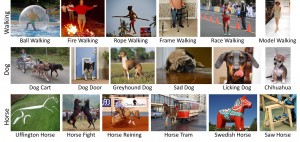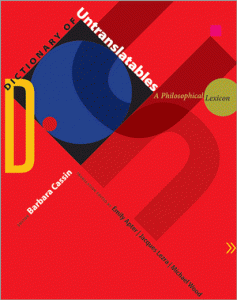Benjamin K. Bergen: Louder than words: the new science of how the mind makes meaning. Basic Books 2012. Reviewed in Language by Raymond W. Gibbs, Volume 90, Number 2, June 2014.
“Imagine that you are a participant in the following psycholinguistic experiment. You are seated in front of a computer terminal and shown the sentence The carpenter hammered the nail into the wall. After reading the sentence, you are shown a picture of an object, such as a nail or elephant, and asked to quickly judge whether that object was mentioned in the sentence. Of course, you would quickly say ‘yes’ to the picture of a nail and ‘no’ to the elephant. The primary interest, however, is in your speeded response to the nail picture, depending on whether it was shown in a horizontal or vertical orientation. Research indicates that people, on average, are faster to make their ‘yes’ decisions when the picture was in the same spatial orientation as implied by the sentence just read … Thus, people are faster to say ‘yes’ when the picture showed the nail in the horizontal orientation than when it was shown upright, or in the vertical position. However, when they first read the sentence The carpenter hammered the nail into the floor, people are faster, on average, to say ‘yes’ to the nail picture that presented it in a vertical position rather than horizontal. One interpretation of these findings is that people automatically construct a mental image of an object in its appropriate spatial orientation based on what the sentence implies. Even if the nail’s position is not explicitly noted in the sentence, our immediate understanding of the sentence’s meaning enables us to create an image of the situation in which the nail was hammered in a horizontal or vertical position. How people construe imaginative understandings of language is the subject of Ben Bergen’s book.” Source: Raymond Gibbs in Language, June 2014.
We seem to begin to understand how simple sentences might be associated with representations of possible situations. It’s not more than a beginning, though. It’s just simple sentences. How do we represent sentences like The carpenter didn’t hammer the nail into the wall or The carpenter should have hammered the nail into the floor? If we picture the nail in a particular orientation in those sentences, too, what does this tell us about how “the mind makes meaning”?
Ben Bergen’s website, with podcasts.






